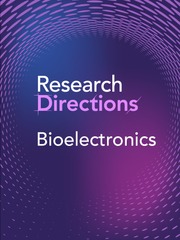Context
Artificial intelligence (AI) has always drawn inspiration from the brain, from its most basic forms like nodes and layers to more recent advances that mimic individual neurons and various aspects of visual and sensory processing.
Progress in cellular and molecular neurobiology and neurophysiology, computational neuroscience, neuromorphic computing and machine learning have all influenced one another but have yet to achieve full alignment. There is still no comprehensive framework that can confirm or disprove findings across these subfields.
One approach to achieving Artificial General Intelligence (AGI) is to fully replicate the physical structure of the brain (Whole Brain Emulation) or specific aspects of it (spiking neurons, synaptic plasticity, dendritic compartmentalization, morphological changes and so on). The applications are numerous but can be broadly categorized into two areas:
-
1. Commercial applications: AI applications in industries such as automotive, aerospace, Industry 4.0, healthcare, prosthetics and brain implants
-
2. Basic research advancements: Input-output computation, spatial computing, structure-function mapping and more
The goal of this topic is to establish a cohesive approach that integrates neurobiology, computational neuroscience, neuromorphic computing and machine learning with the ultimate objective of achieving AGI. How can we best pursue this goal and reach a consensus?
Here are some key questions to consider:
-
1. Neurobiology and neurophysiology: What are the most significant advancements in neurobiology and neurophysiology that can and should be effectively incorporated into working models that computational neuroscientists and machine learning engineers can incorporate and verify/falsify in their models?
-
2. Computational neuroscience models: Which computational neuroscience models are adequately supported by neurobiology experiments and still stand as both an accurate representation of neurophysiological functions and lead to substantial improvements in machine learning parameters such as computational speed, energy efficiency and accuracy?
-
3. Neuromorphic models: Which neuromorphic models, both software and hardware (e.g., Nengo, SNNs, neuromorphic chips), effectively emulate neurobiological structures and findings as corroborated by sufficient neurobiology and computational neuroscience studies, while also demonstrating superior performance across all parameters compared to, for instance, von Neumann machines or classical convolutional neural networks?
-
4. Large-scale machine learning applications and chipsets: Which current large-scale machine learning applications and chipsets accurately emulate neurobiological structures as well as their functions as corroborated by both neurobiological studies and computational neuroscience models?
-
5. Brain-machine interfaces and neuroprosthetics: What are the most recent developments in brain-machine interfaces and neuroprosthetics that demonstrate both very clear and falsifiable results as well as the potential for mass scaling with high TRL (Technology Readiness Level) and a path to FDA approval, enabling the collection of relevant data to develop and adapt effective computational neuroscience models and machine learning models with enhanced efficacy?
-
6. Encompassing system: What proposals are there for a comprehensive system that allows us to assess the level of corroboration and efficacy quantitatively and qualitatively from neurobiology to computational neuroscience to neuromorphic to TRL6+ machine learning applications at scale and back?
By addressing these questions and establishing a unified framework, we can accelerate progress towards achieving AGI while ensuring that advancements are grounded in a deep understanding of the brain’s biological underpinnings.
How to contribute to this question
If you believe you can contribute to answering this Question with your research outputs find out how to submit in the Instructions for authors (https://www.cambridge.org/core/journals/research-directions-bioelectronics/information/author-instructions/preparing-your-materials). This journal publishes Results, Analyses, Impact papers and additional content such as preprints and “grey literature.” Questions will be closed when the editors agree that enough has been published to answer the Question so before submitting, check if this is still an active Question. If it is closed, another relevant Question may be currently open, so do review all the open Questions in your field. For any further queries check the information pages (https://www.cambridge.org/core/journals research-directions-bioelectronics/information/about-this-journal) or contact this email ([email protected]).
Competing interests
The authors declare none.




